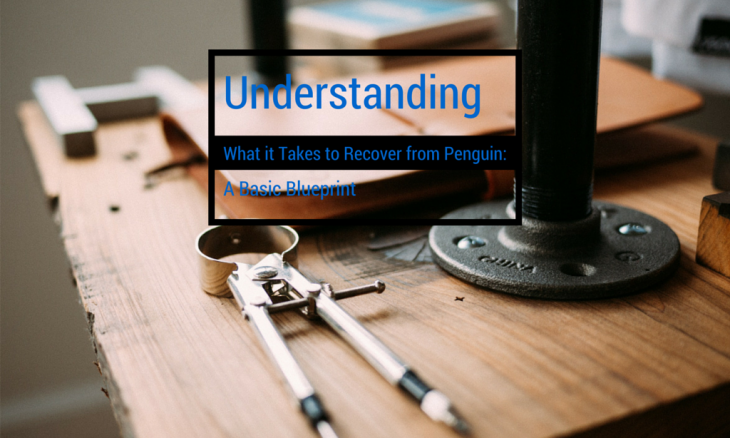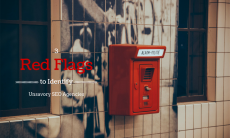If you suspect your site has been hit by Google’s Penguin algorithm, there are some distinct factors you must consider in order to work towards recovery.
As a business owner, you likely don’t have the time available to implement a complicated Penguin recovery plan yourself. However, if you suddenly find that traffic is dipping, your site is not ranking where it used to for important keywords, and your revenue is hurting, you need to take action. If you suspect Penguin to be the cause, you need to find a solution to recover your search rankings and visibility.
In this situation, you will likely need to turn to an SEO agency or Penguin recovery expert. While the Penguin algorithm is incredibly complex (nobody outside of Google knows how it operates) and a full recovery is never guaranteed, there is a basic blueprint you can use to follow along with what’s happening in your recovery process to ensure whoever you hire is working with your best interests at heart.
Basic Overview of Google’s Penguin Algorithm
Let’s start with an overview of the infamous Penguin algorithm.
The Penguin algorithm was designed to battle link spam and it focuses on evaluating backlinks. Penguin is designed to punish sites that attempt to manipulate Google’s search results by participating in link schemes. In the past it has taken very long to get out from underneath Penguin due to infrequent updates to the algorithm, but recently Google has stated that they could be moving towards a continuous update model.
While Penguin itself is complex and there a number of myths surrounding it, the key point to remember is that it deals with backlinks. And if you have hired an SEO consultant or SEO agency to help you recover from Penguin, there are some basic strategies you should ensure are being implemented.
Link Removal
If your site has been hit by Penguin, you have some toxic links.
Removing toxic links is always a good idea, and it can be especially helpful when you’re attempting to recover from Penguin. However, link removal is very difficult and most recovery experts estimate that the success rate for link removal requests is around 5-20%.
While link removal requests are for the large part unsuccessful, there are still some links that you have a 100% chance of removing: the links you control. Examples of these links include:
- Anchored URLs in the footers of your site
- Directory links/blog post links where you have login access
- Paid links that can easily be removed
- Etc.
Make sure the company/person you’ve hired to clean up your links is accounting for these toxic links and removing them.
Due to the difficulty associated with attempting to remove links you have no control over, a fair amount of your recovery efforts should be focused on utilizing the disavow tool.
Disavow Links
Because you can’t remove every link that is potentially harmful, you must utilize the disavow tool.
Google understands that you can’t control every link that points to your site. Occasionally, another site might link to you which you wouldn’t want Google to count. Because of this, Google created the disavow tool. The disavow tool is provided by Google and it allows you to “disavow” links which designates to Google that they should disregard those links. However, be careful to only disavow links you’re sure are spammy or truly low-quality because once you do, Google will no longer take these links into account and any link equity they possess will be lost.
There has been a bit of debate over the effectiveness of the disavow tool for Penguin recovery within the SEO industry. However, Google encourages people to use the disavow tool when they can’t get links removed.
Considering link removal is very hard and Google recommends using the disavow tool, you should make sure whoever is working on your recovery uses this tool and submits a disavowal file.
For more on what a disavowal file might look like, read this article.
Acquire Real Links
Don’t overlook the need to acquire real and worthwhile backlinks for your site.
Removing and disavowing toxic links is absolutely necessary to free yourself from Penguin, but you also need to account for acquiring links if you want to eventually recover.
Remember that any links Google now views as useless or toxic once had value and equity. You need to replace that lost link equity if you want to work toward a full recovery and get back to your previous search positions. Even if you escape Penguin, you will need real links to improve search visibility.
Also, building fresh, quality links can signal positive movement to Penguin. Google’s John Mueller addressed this in a recent Google Webmaster Central Hangout:
“Yeah. That’s something that our algorithms would take into account– where if they look at the site overall and they see that this is essentially improving, if it looks like things are headed in the right way and the important links are really good links that are recommendations by other people, then they’ll be able to take that into account and modify whatever adjustment there was made with that change there on that website.” – John Mueller
If the people you hired to help you recover from Penguin are working to remove bad links, they should work to acquire quality links to replace lost link equity and show positive movement to Google.
Conclusion
Recovering after being hit by Google’s Penguin algorithm is difficult, complex, and time-consuming. If you’re not an experienced SEO or don’t have time to fully commit to the process, I suggest you hire a professional to help your site recover.
However, there is a blueprint you can use to follow along with to ensure whoever you hire is following best practices:
- Link removal – start by removing any links you have control over removing yourself or have a high chance of being removed through a link removal request
- Disavow links – utilize Google’s disavow tool to disavow any links you are unable to remove
- Acquire real links – work to build fresh and worthwhile links to replace lost link equity and signal positive movement to the Penguin algorithm







